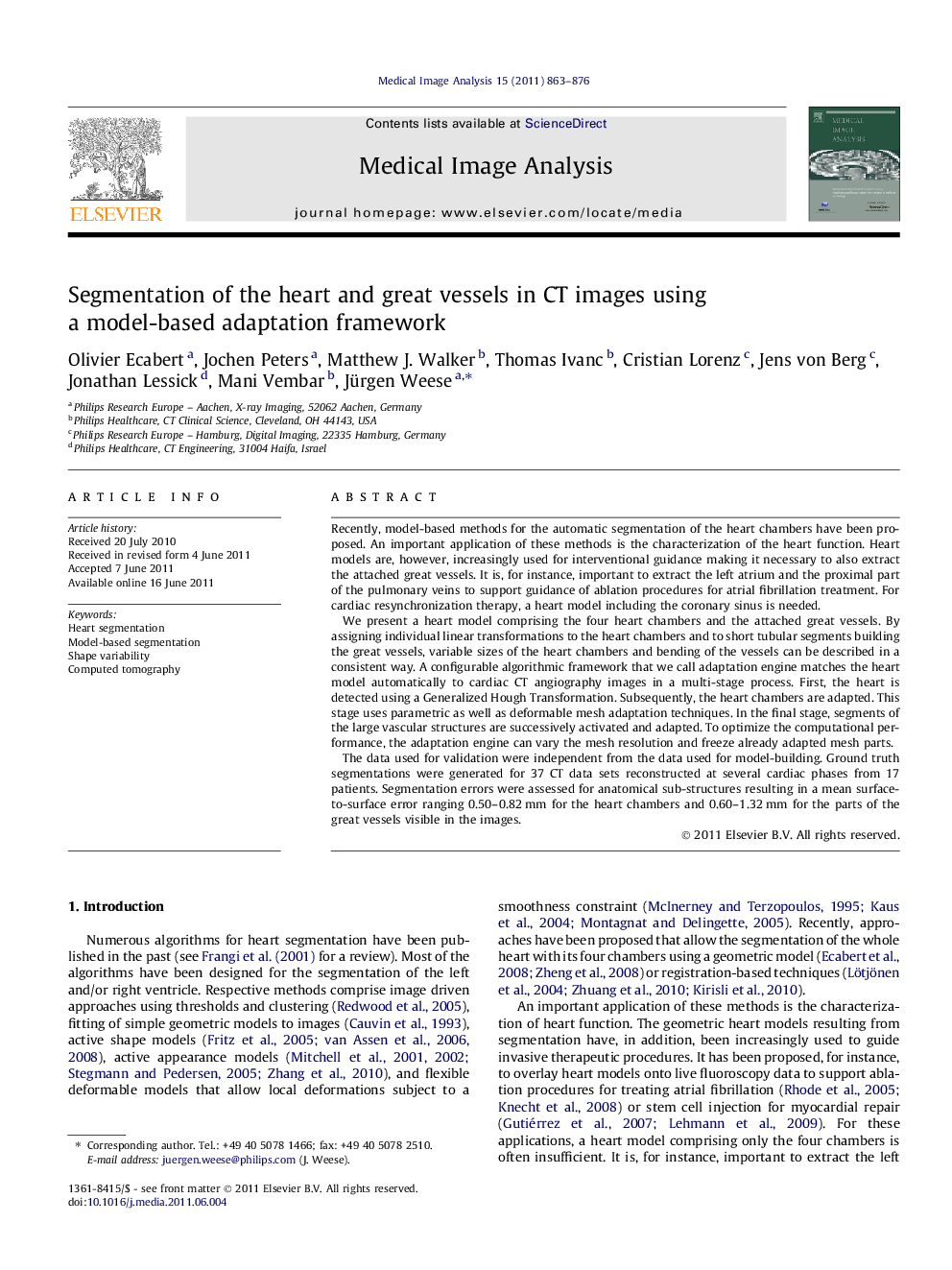| کد مقاله | کد نشریه | سال انتشار | مقاله انگلیسی | نسخه تمام متن |
|---|---|---|---|---|
| 443089 | 692537 | 2011 | 14 صفحه PDF | دانلود رایگان |

Recently, model-based methods for the automatic segmentation of the heart chambers have been proposed. An important application of these methods is the characterization of the heart function. Heart models are, however, increasingly used for interventional guidance making it necessary to also extract the attached great vessels. It is, for instance, important to extract the left atrium and the proximal part of the pulmonary veins to support guidance of ablation procedures for atrial fibrillation treatment. For cardiac resynchronization therapy, a heart model including the coronary sinus is needed.We present a heart model comprising the four heart chambers and the attached great vessels. By assigning individual linear transformations to the heart chambers and to short tubular segments building the great vessels, variable sizes of the heart chambers and bending of the vessels can be described in a consistent way. A configurable algorithmic framework that we call adaptation engine matches the heart model automatically to cardiac CT angiography images in a multi-stage process. First, the heart is detected using a Generalized Hough Transformation. Subsequently, the heart chambers are adapted. This stage uses parametric as well as deformable mesh adaptation techniques. In the final stage, segments of the large vascular structures are successively activated and adapted. To optimize the computational performance, the adaptation engine can vary the mesh resolution and freeze already adapted mesh parts.The data used for validation were independent from the data used for model-building. Ground truth segmentations were generated for 37 CT data sets reconstructed at several cardiac phases from 17 patients. Segmentation errors were assessed for anatomical sub-structures resulting in a mean surface-to-surface error ranging 0.50–0.82 mm for the heart chambers and 0.60–1.32 mm for the parts of the great vessels visible in the images.
We present a heart model comprising the four heart chambers and the attached great vessels. A configurable algorithmic framework that we call adaptation engine matches the heart model automatically to cardiac CT angiography images in a multi-stage process.Figure optionsDownload high-quality image (106 K)Download as PowerPoint slideHighlights
► Single and consistent framework for simultaneous chamber and vessel segmentation.
► Shape variability of chambers and vessels modeled using multi-linear transformations.
► Flexible engine to schedule when and how the different parts of the model are adapted.
► Mean point-to-surface error: chambers 0.50–0.82 mm, vessels 0.60–1.32 mm.
Journal: Medical Image Analysis - Volume 15, Issue 6, December 2011, Pages 863–876